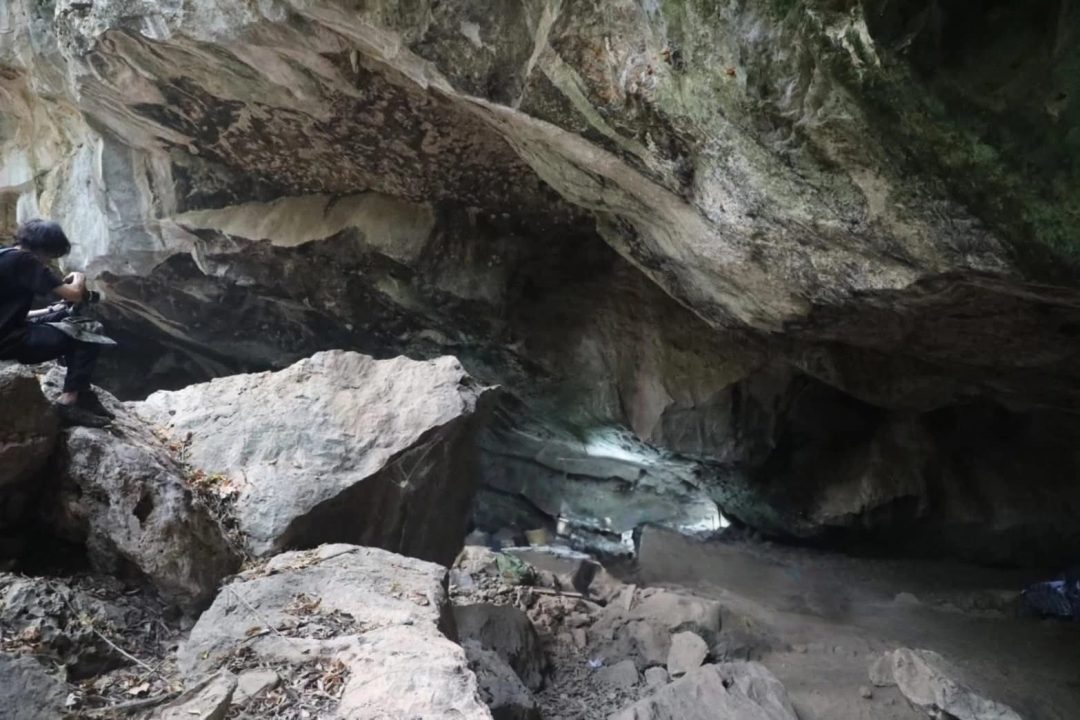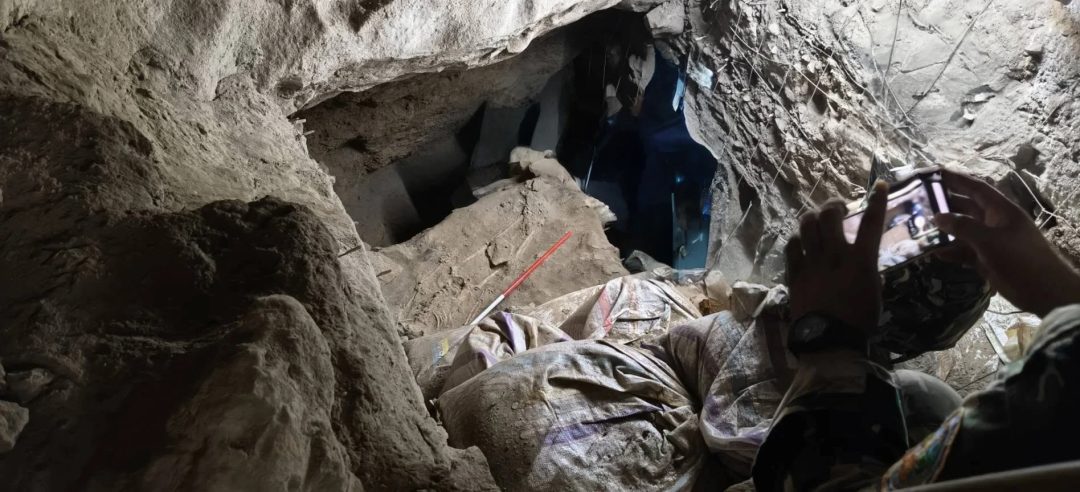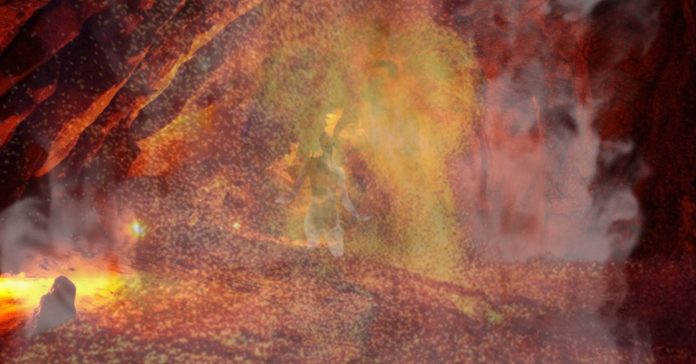In Tham Din Cave, hidden in Thailand’s Khao Sam Roi Yot Park, a skeleton emerged from 29,000 years ago. The oldest human remains ever found in the nation. It was unearthed in February 2025 by Thailand’s Fine Arts Department. The remains belonged to a child. And offers a haunting glimpse into a prehistoric world where ritual and mystery reigned. Estimated to be 6 to 8 years old, the child was laid to rest 2 meters beneath the cave floor. A deliberate act marked by a ceremonial fire and encircled by stones.

An Ancient Sepulcher
The cave’s walls bear the crimson strokes of red ochre, an ancient pigment that stains the rock with enigmatic power. They depict mysterious anamorphic and geometric depictions. Distorted figures and shapes that defy simple explanation, their meanings lost to the millennia. Here, we propose a bold connection. These blood-red paintings are not random but intimately tied to the child’s burial. A visual hymn sung in ochre to consecrate the ritual space. The pigment, often a symbol of life, death, or transcendence, binds the artwork to the act below, as if the cave itself became a canvas for the child’s passage.

Around the child blazed a fire, its ash and charcoal remnants scattered around the small, supine body, legs together, arms resting at its sides, a posture of eternal calm. This was no casual flame but a ceremonial fire, lit with intent to sanctify the burial. The stones encircling the child, like silent sentinels, amplify the scene’s gravity, suggesting a community gathered in reverence or supplication. Together, the fire, the stones, and the ochre-laden walls weave a larger ritualistic tapestry. One where the Blood Cave served as both tomb and temple.
A Distant Echo
Dated to the Late Pleistocene, some 29,000 years ago, this burial aligns with a time when vast land bridges of Sundaland linked Southeast Asia, a forgotten era of wandering tribes. Yet the cave’s use stretched beyond this moment, echoing through the ages to Holocene farmers, its walls and depths a palimpsest of human presence. The child, though, remains its most ancient beacon one who’s signal we just received.

Imagination Less Imagined
The researchers’ guesses about the paintings and fires meanings to “to ward off prey” and “hunters chasing deer”, are dismissed here as mundane. The anamorphic forms and geometric lines defy such tidy tales, hinting instead at a cosmology or spiritual code. The ceremonial fire, too, stands alone, not as a pragmatic utility, but as a sacred act, an elemental prayer, its smoke curling upward to meet the ochre shadows above.
Closing Remarks
The Blood Cave Child of Thailand lies as a testament to a lost world, where a young life was honored with flame and stone beneath a gallery of crimson mysteries. In Tham Din’s silence, the echoes of that ancient ritual linger, a story painted in blood-red and sealed in time.

